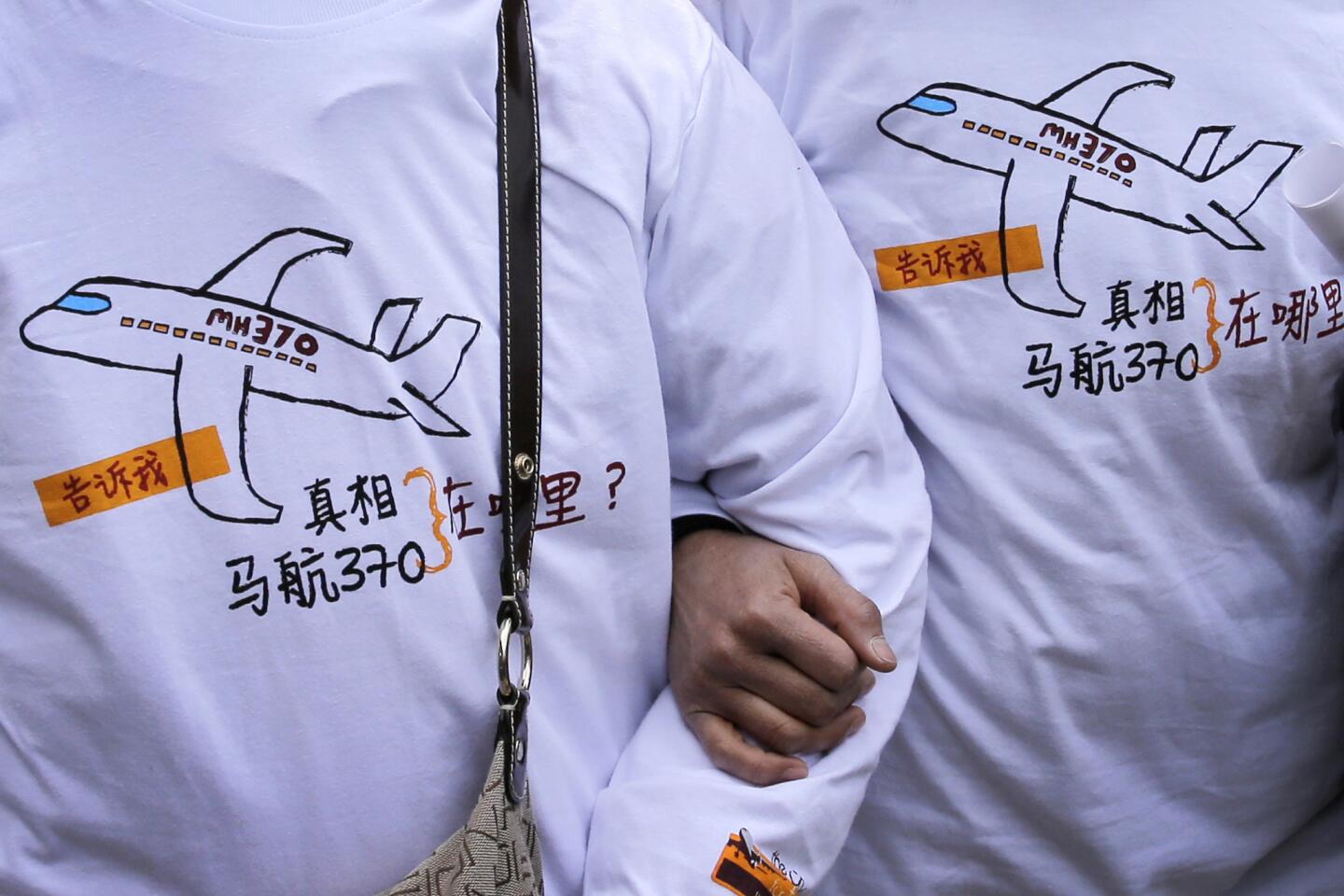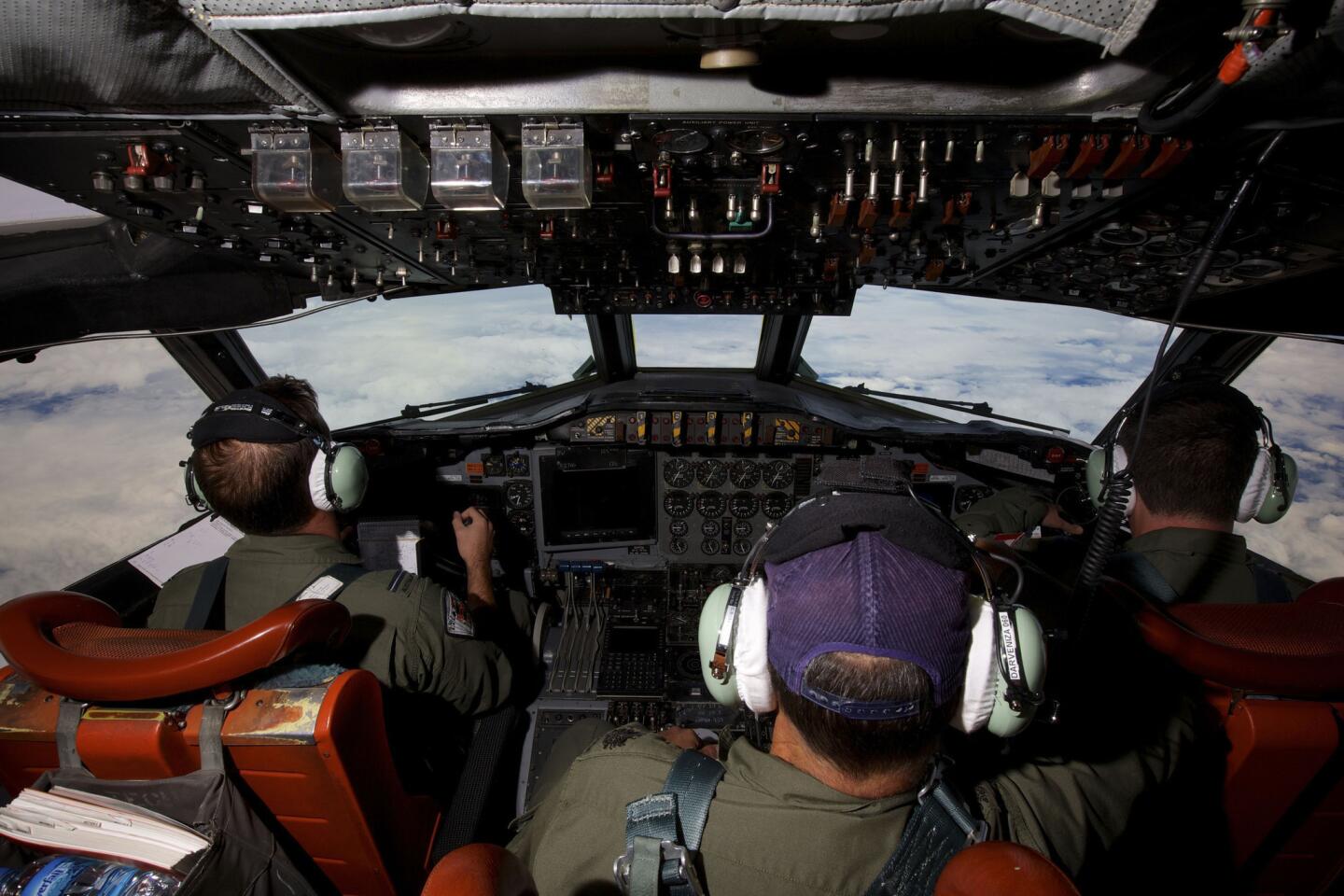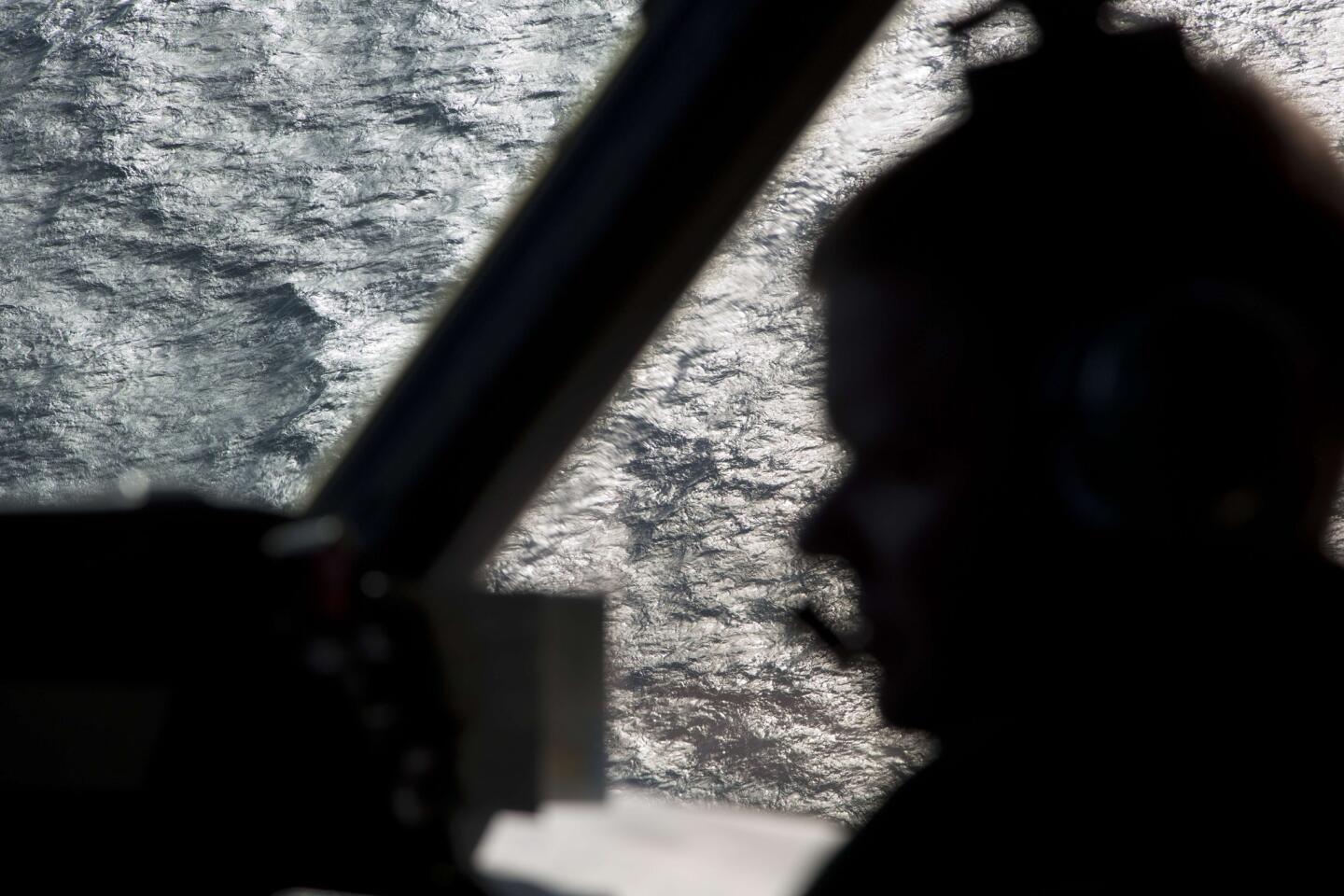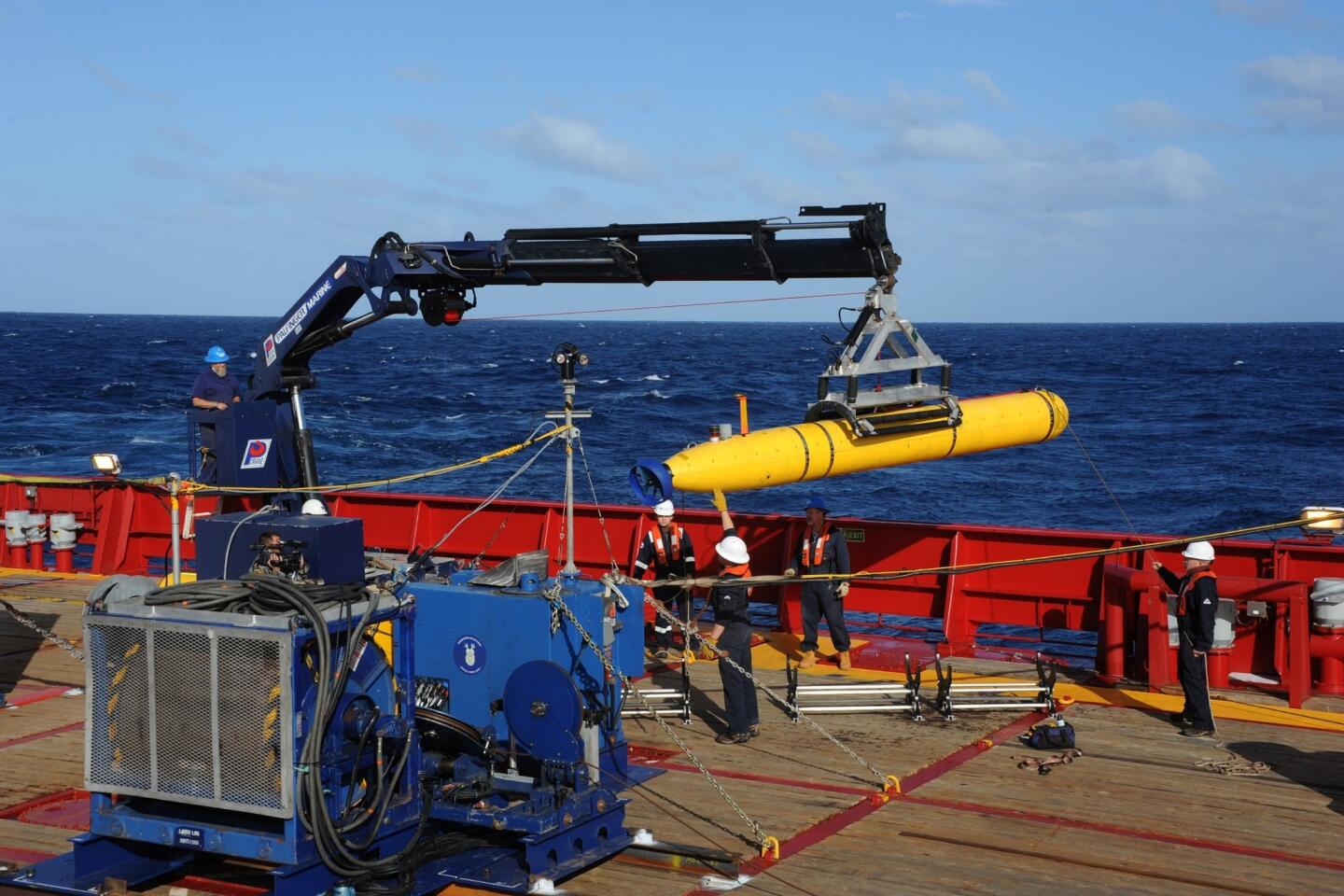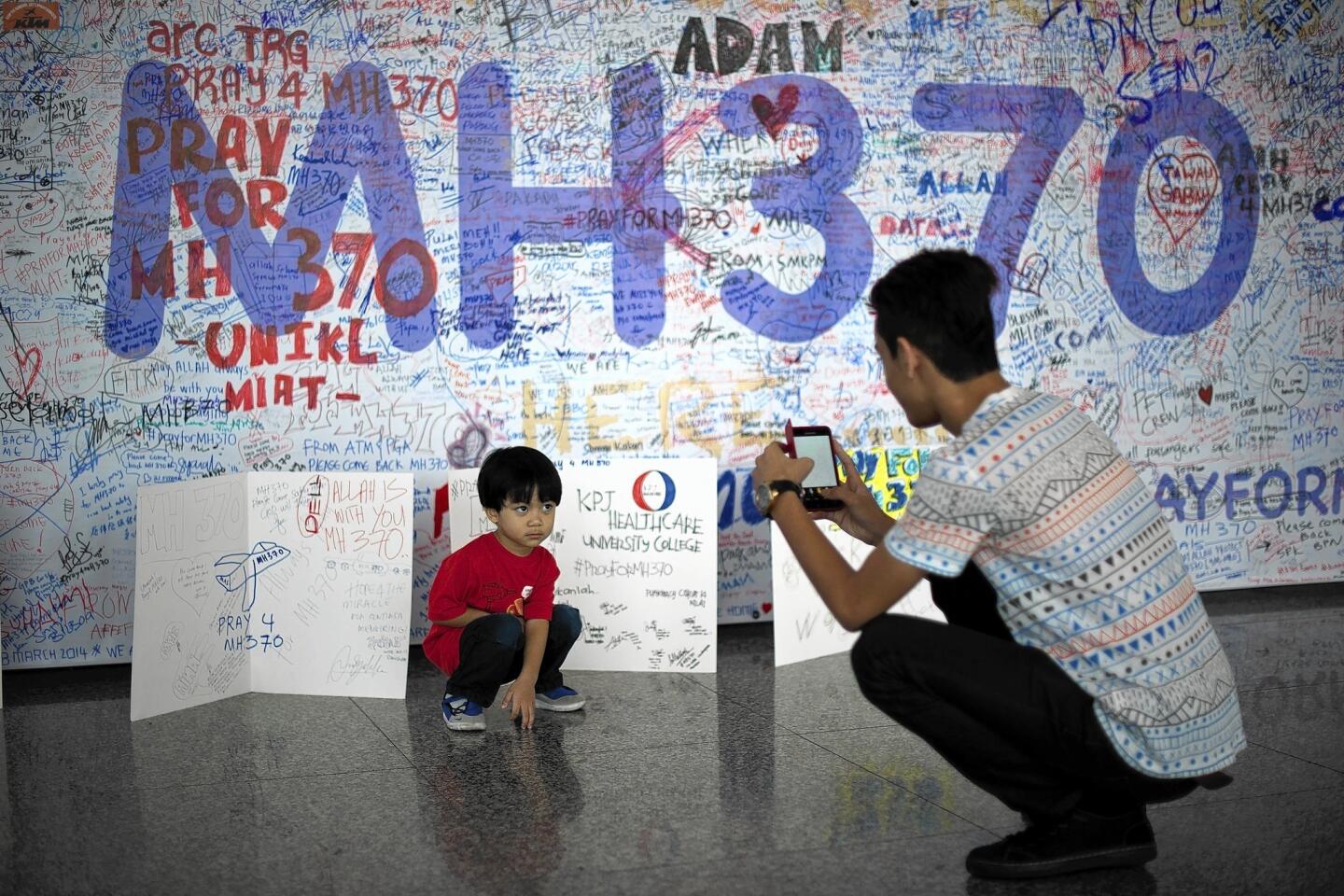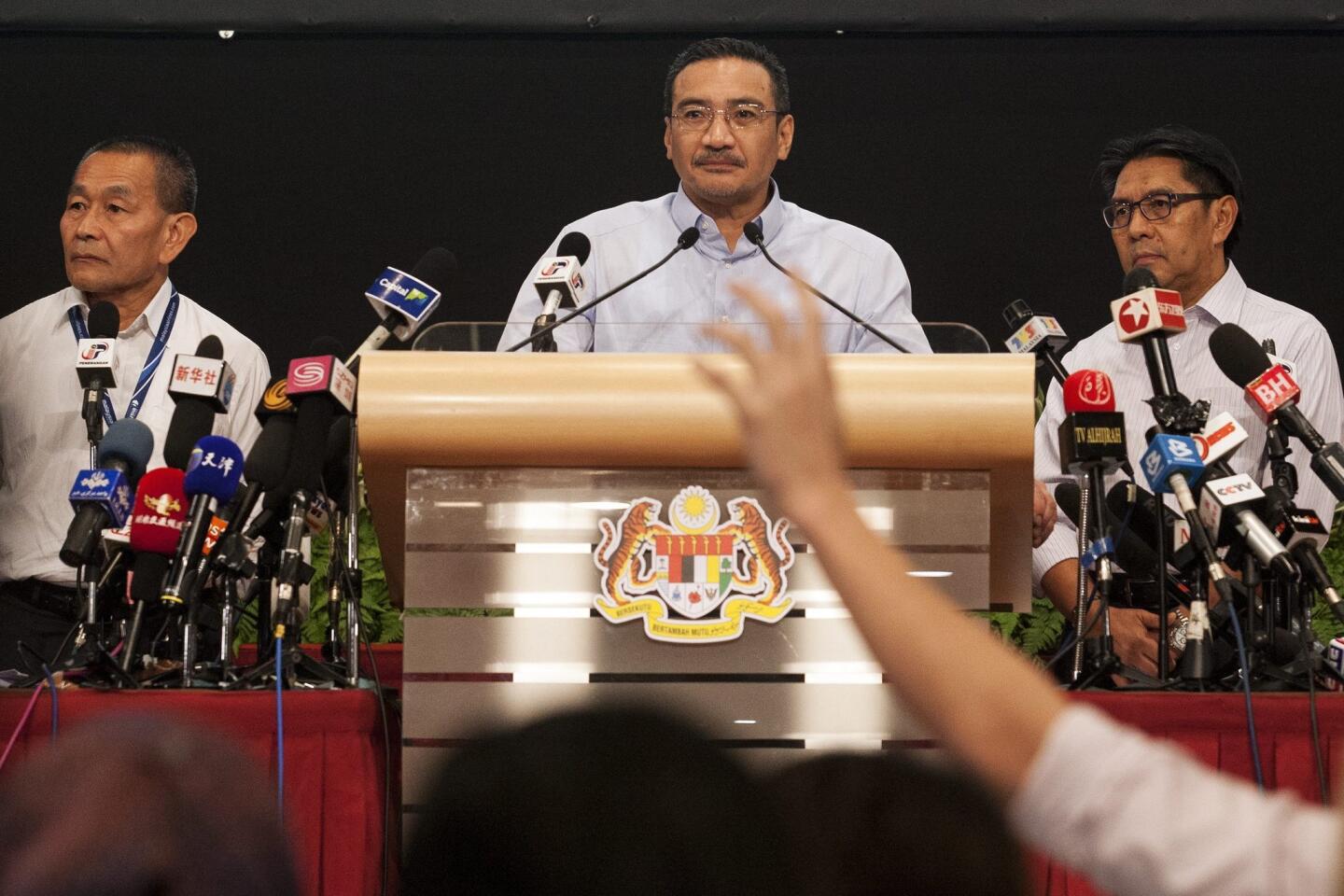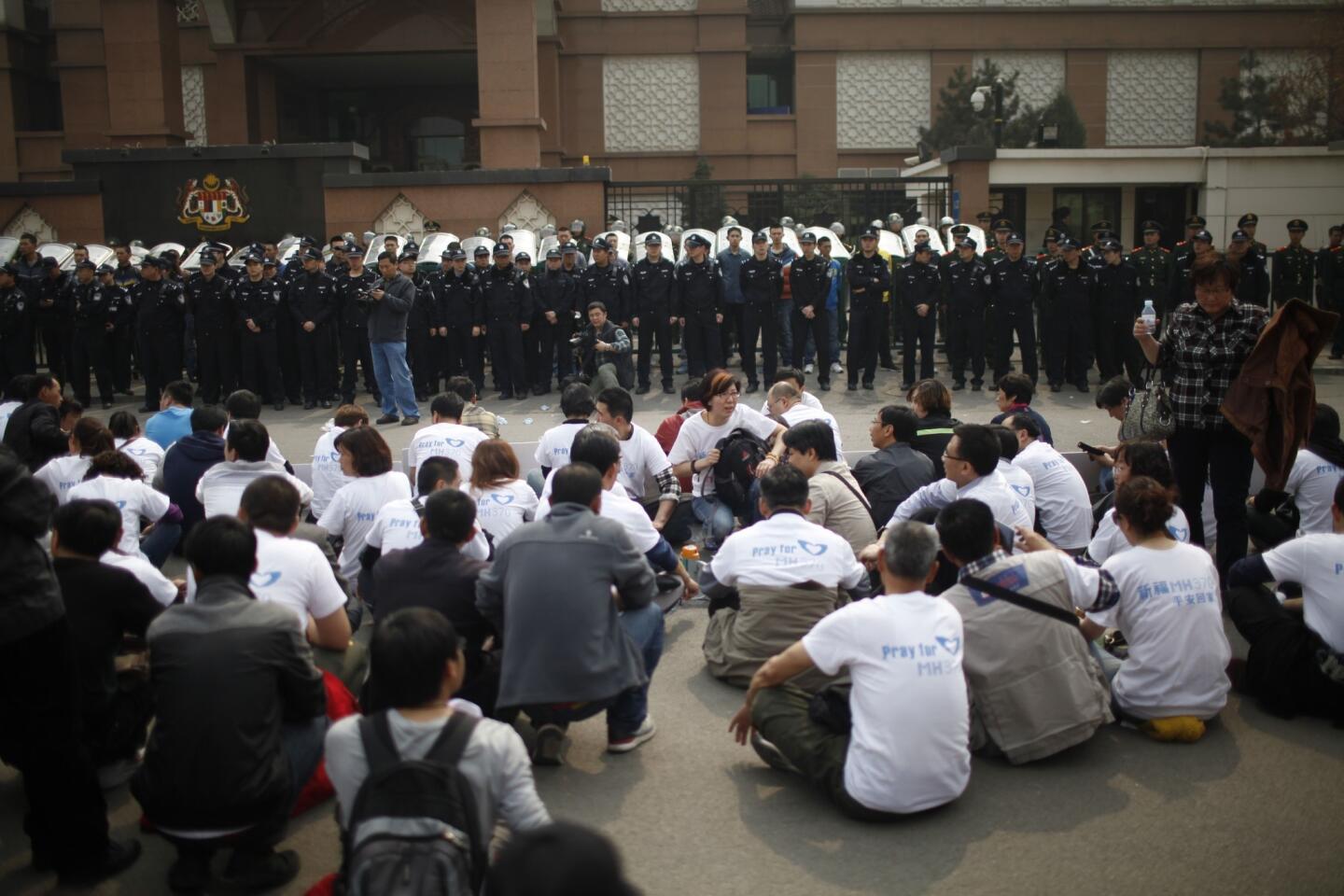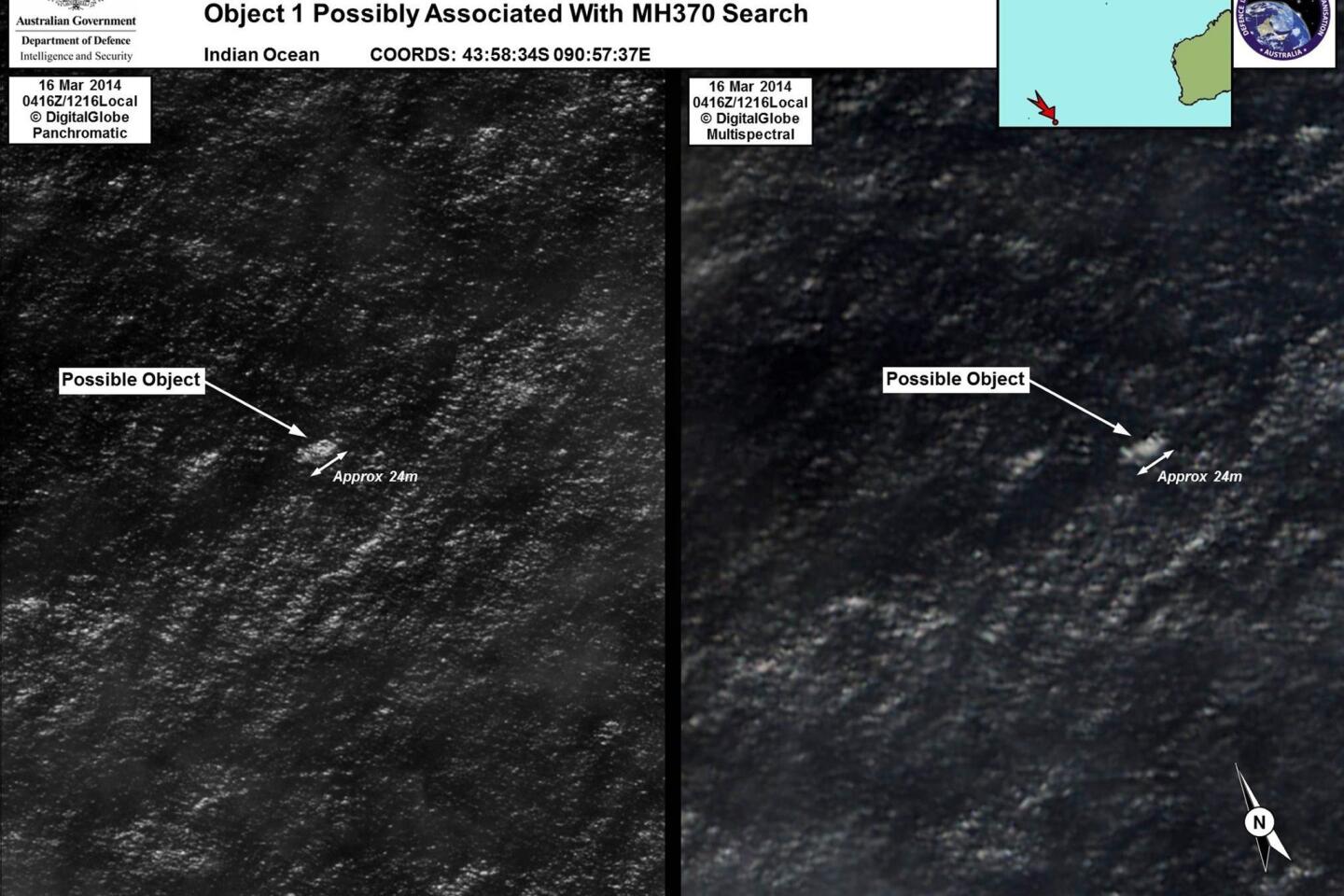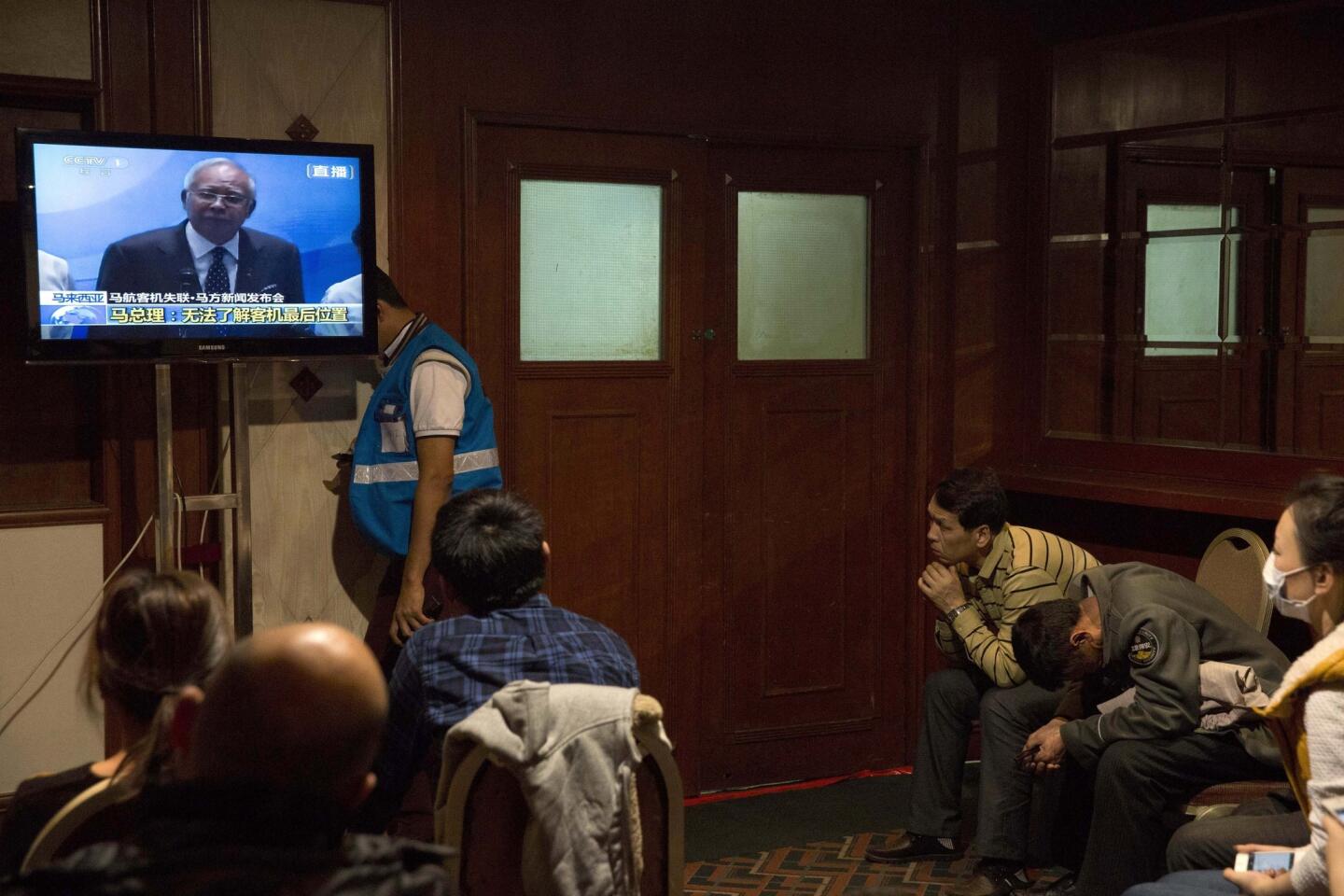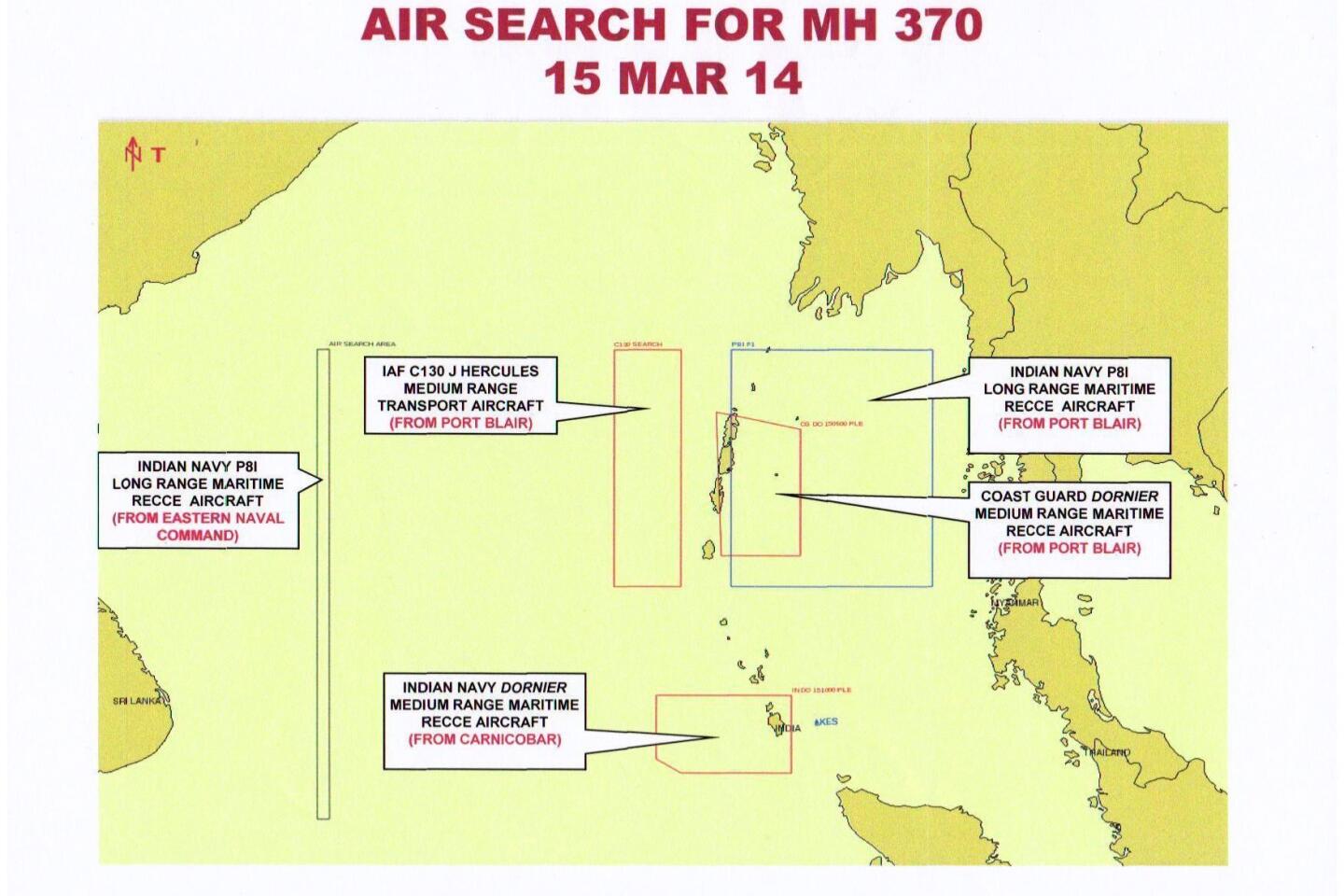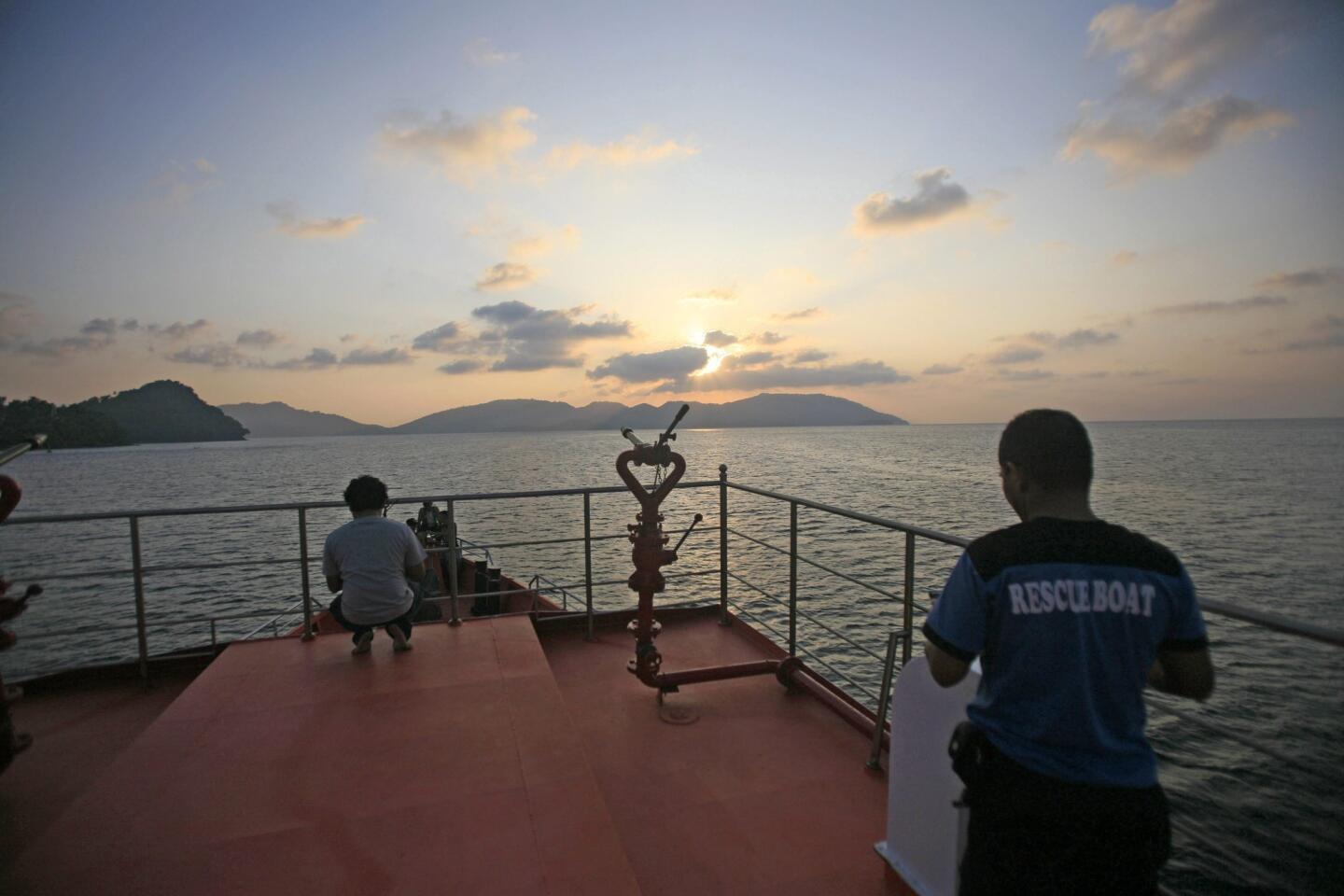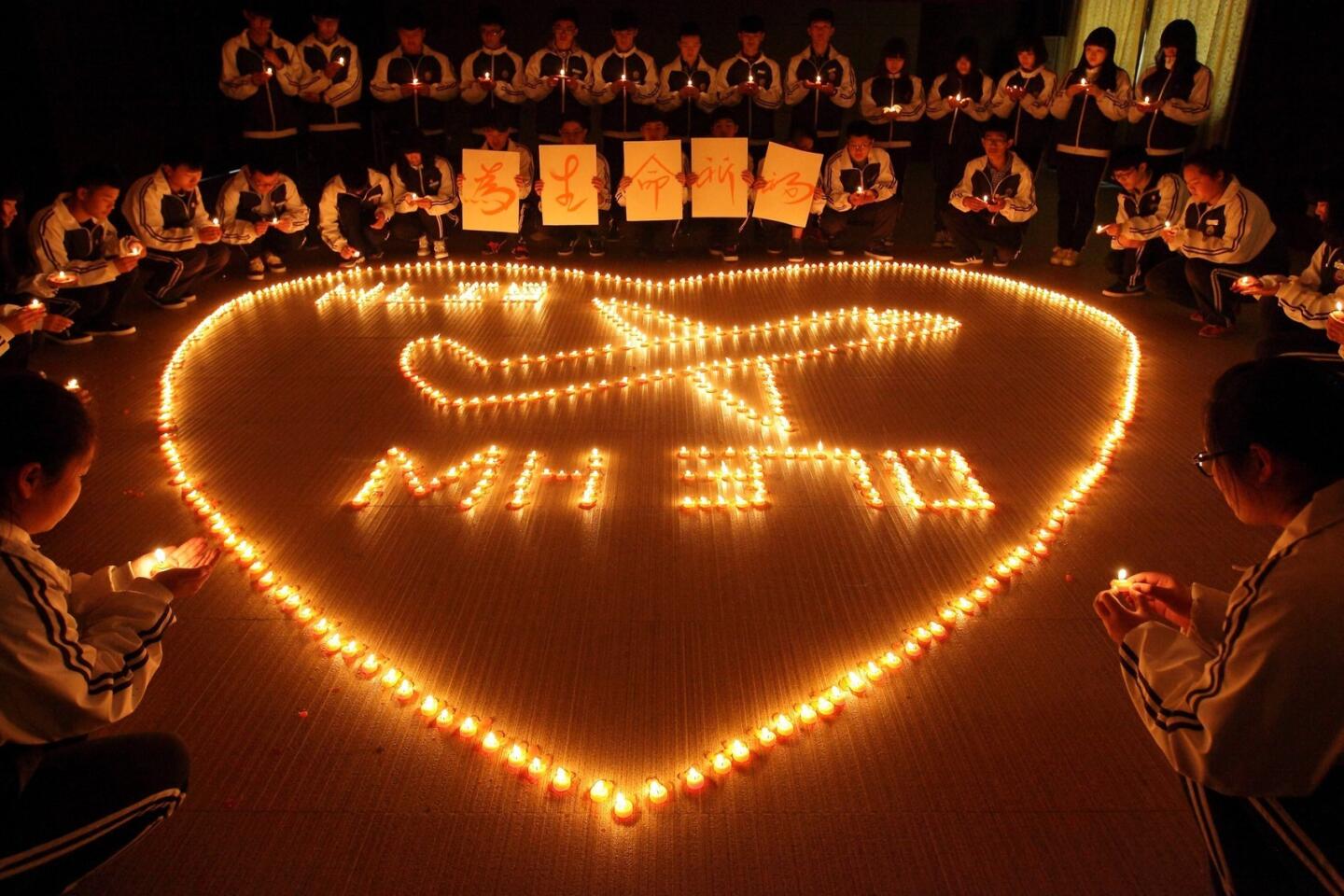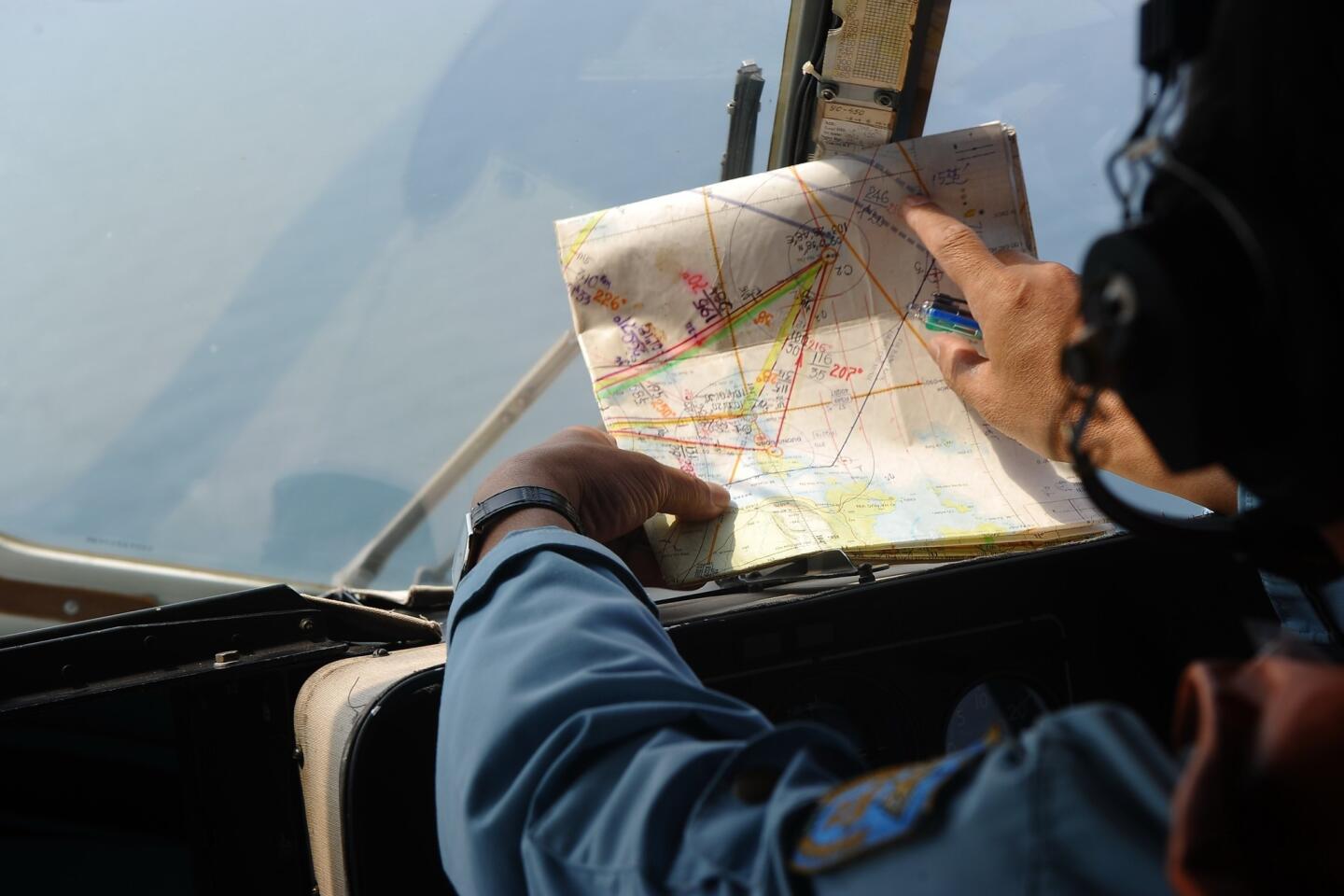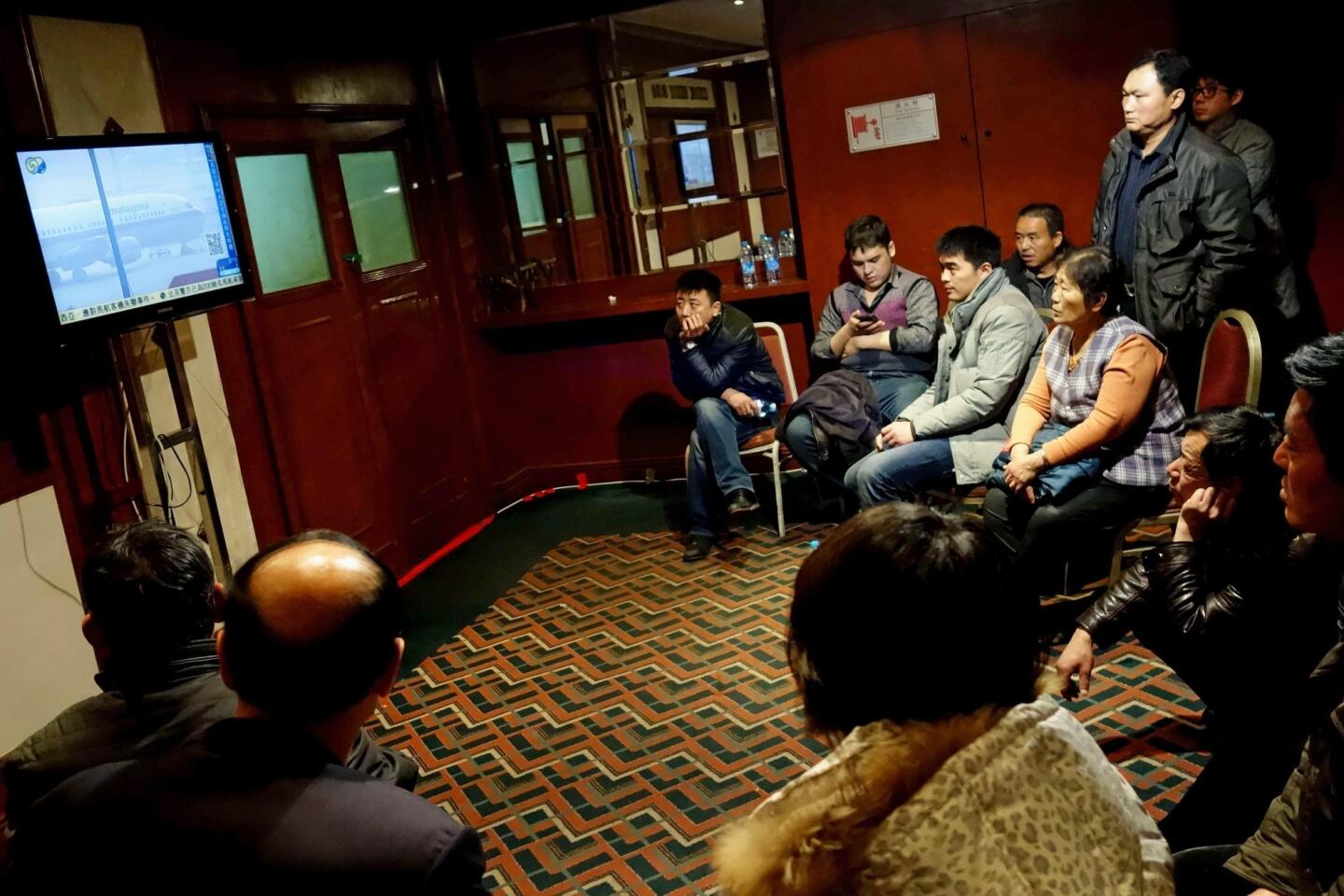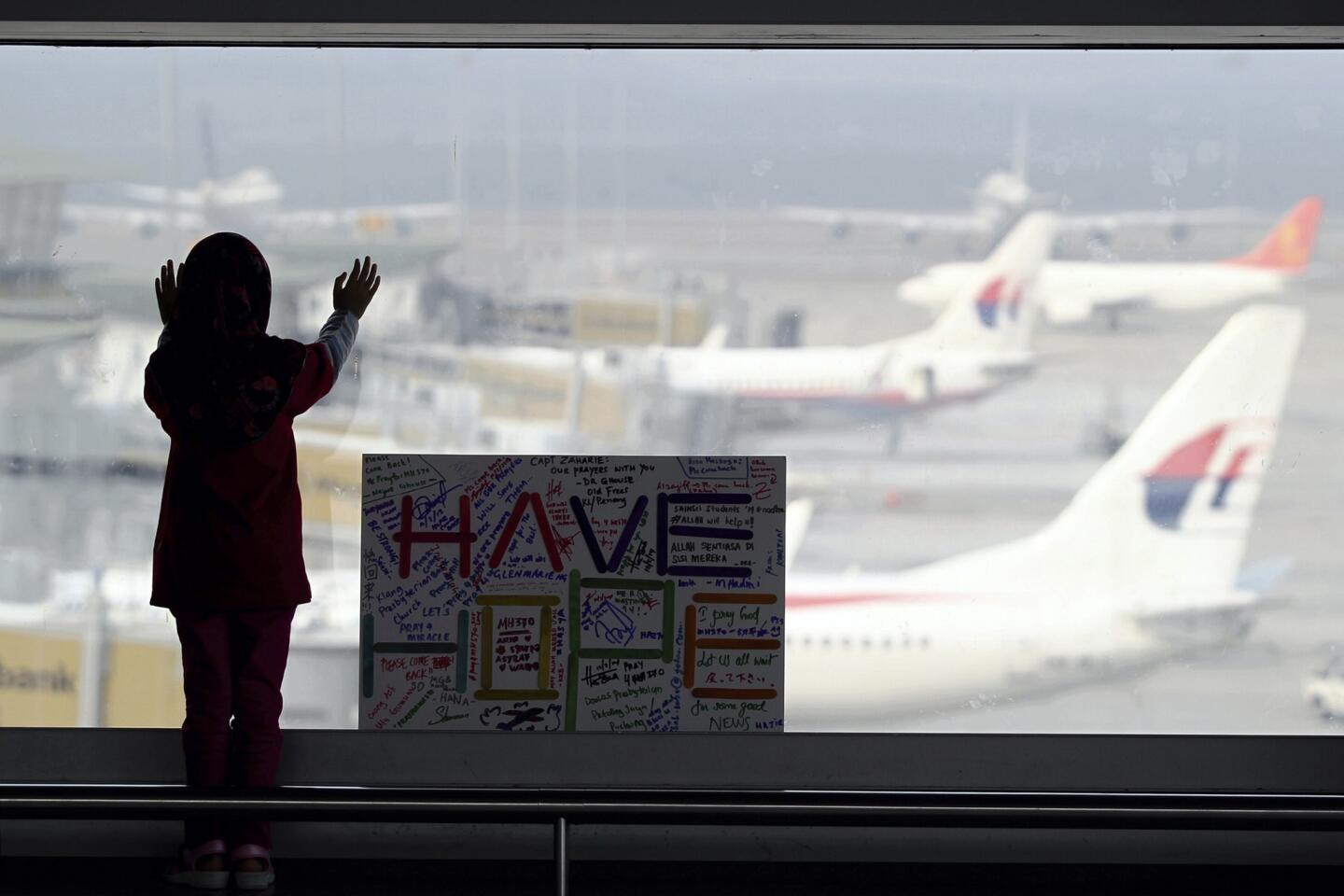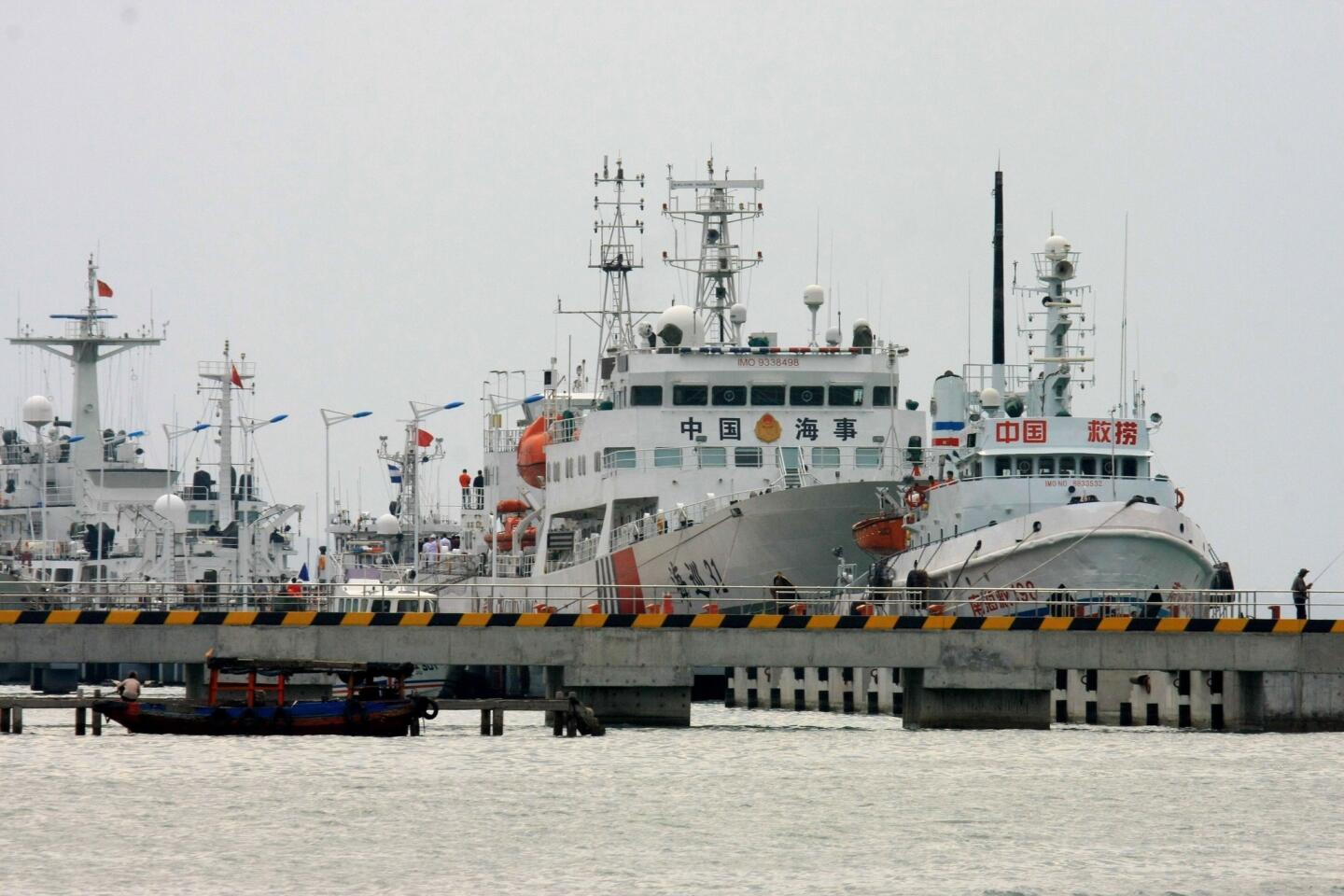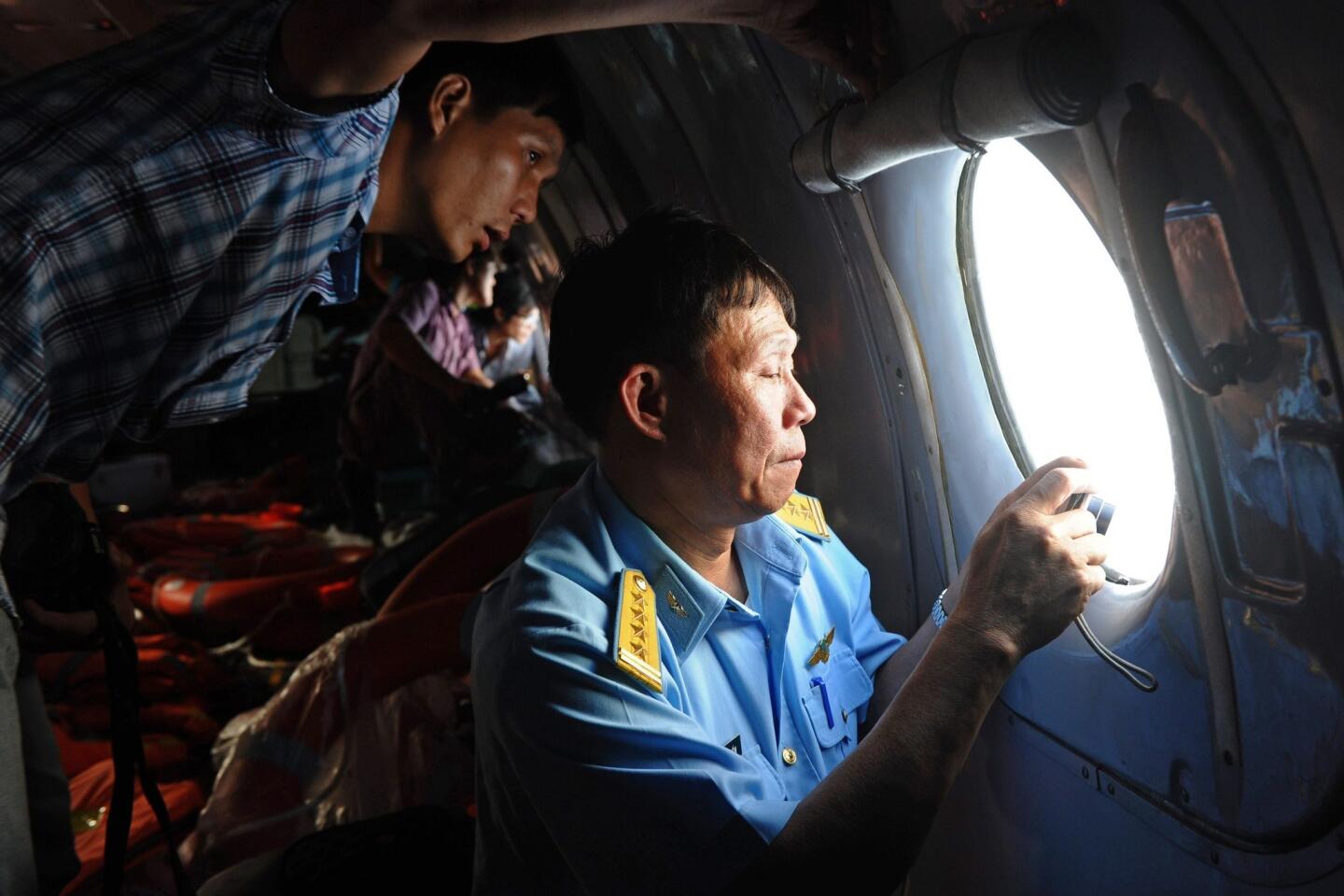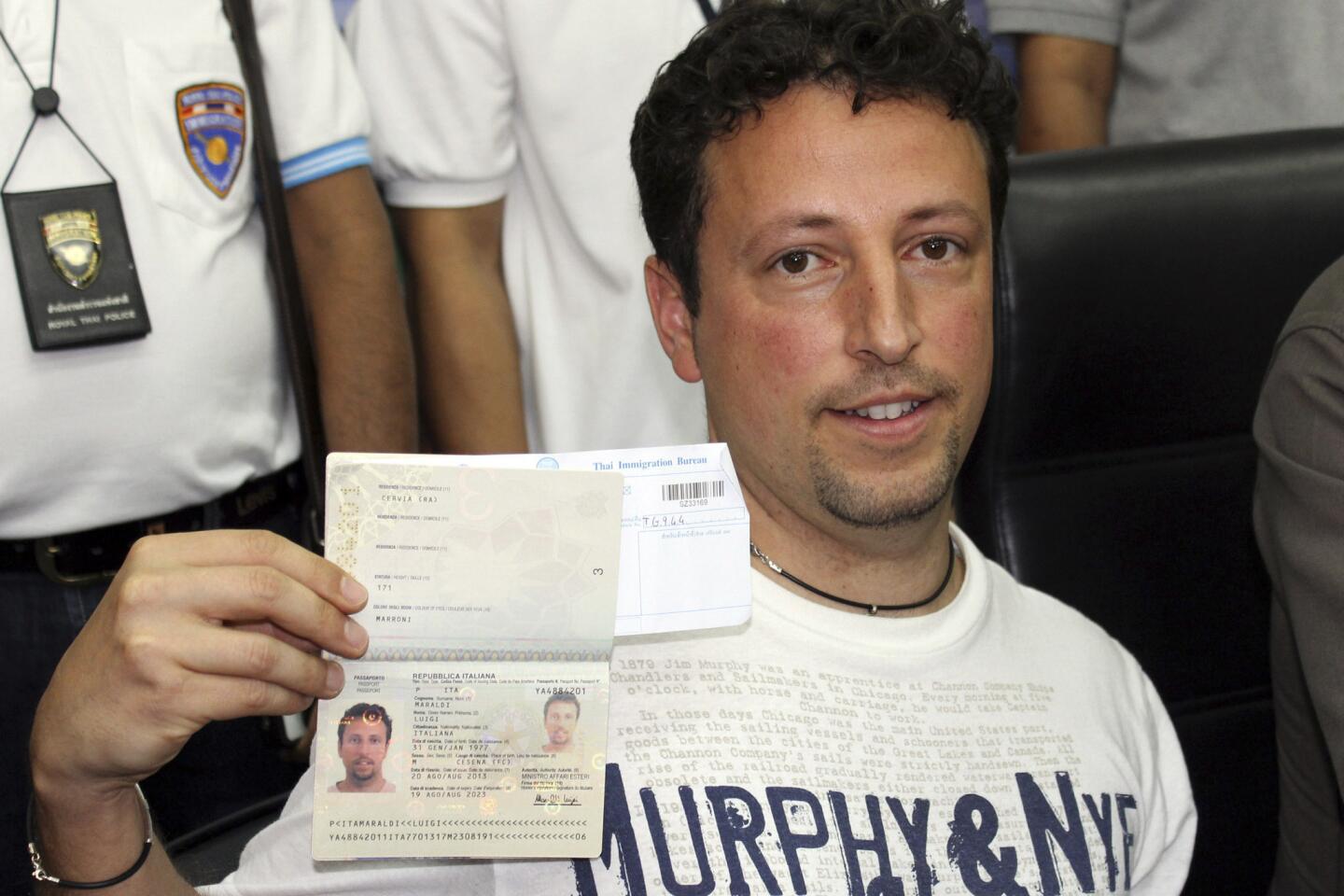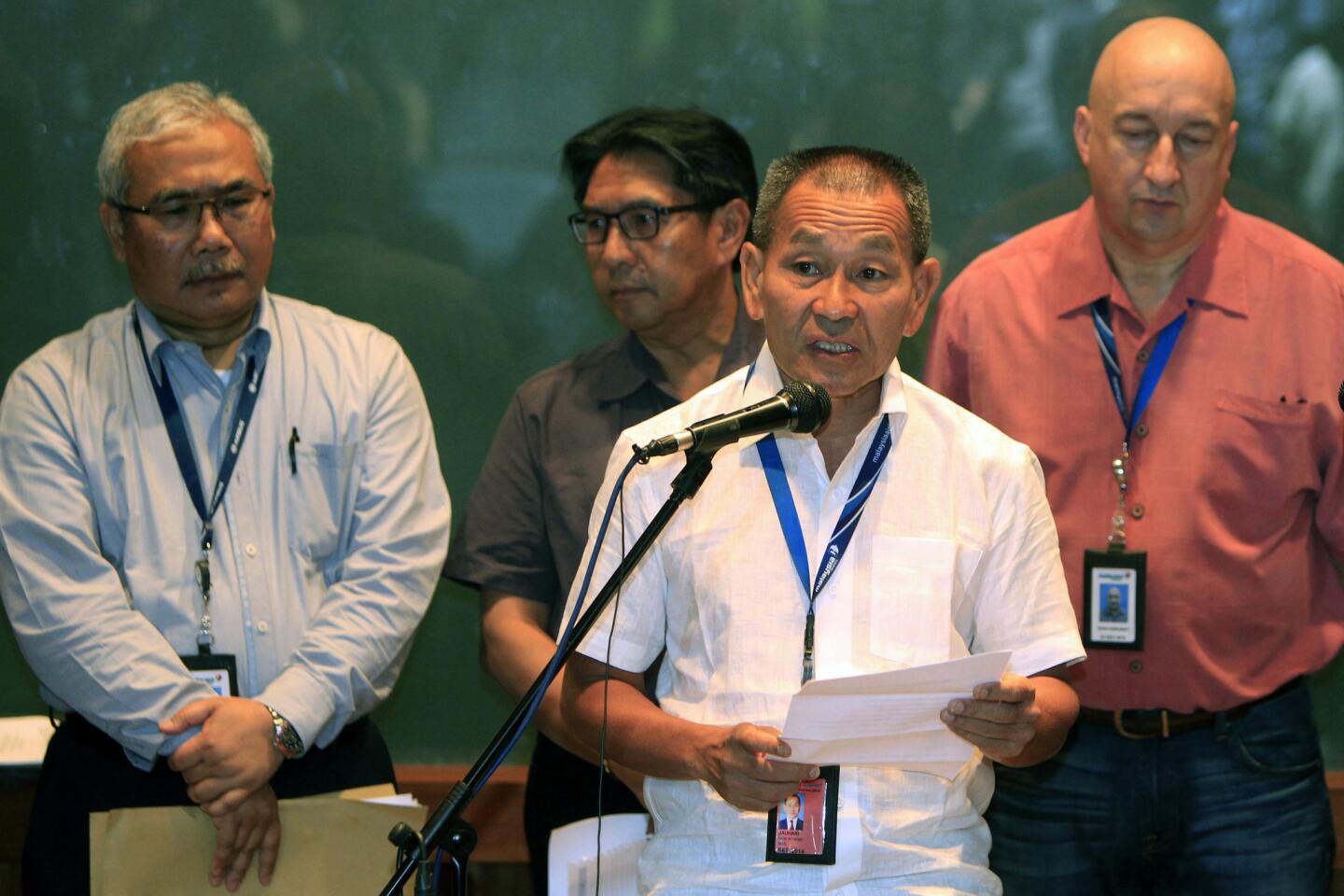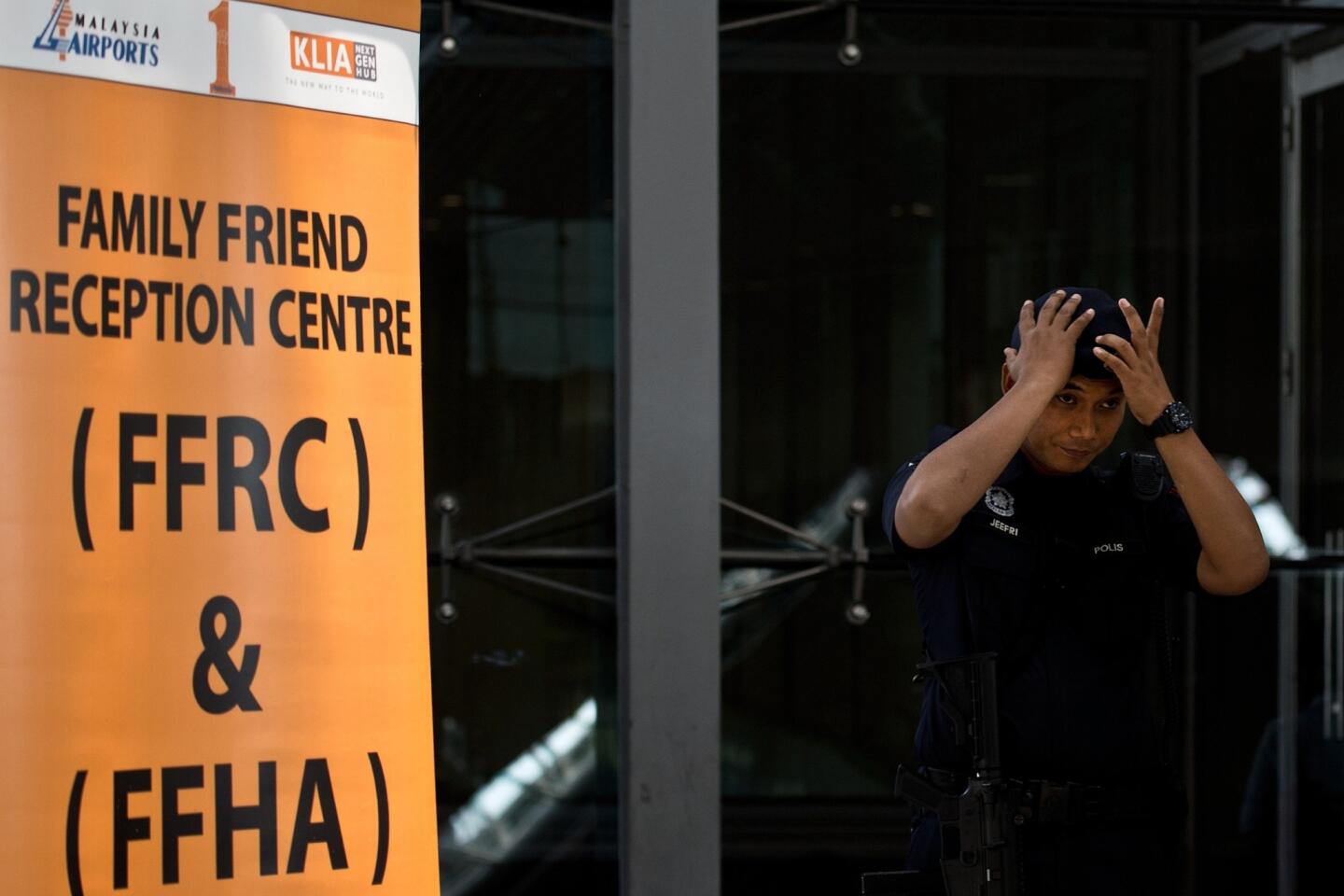Chinese plane spots object in Malaysia jet search area
- Share via
KUALA LUMPUR, Malaysia — A succession of satellite images from the Australians, the Chinese and the French, as well as a Chinese plane’s report of “suspicious objects,” has bolstered hopes for a breakthrough in the disappearance of Malaysia Airlines Flight 370.
It has also raised hopes of a different kind: that the multinational effort to find the missing plane may prove to be a step toward easing some of the potentially dangerous tensions that have been growing in Asia.
Although many of the problems in this region are seemingly intractable, fraught with territorial interests and historical mistrust, the search for the jetliner has prompted countries to cooperate and engage with one another on sensitive issues.
PHOTOS: Missing Malaysia Airlines plane
On Monday, a Chinese search plane spotted “suspicious objects” in the southern Indian Ocean, China’s state media reported. The crew sent the coordinates to the Australian command center as well as a Chinese icebreaker, which was en route, but it was unclear how far away the icebreaker was.
China and Japan have sparred for months over islands in the East China Sea, but now are working with the Australian-led team of U.S. and New Zealand planes that has been combing the waters off the coast of western Australia for the last four days. India and China, despite their long rivalry, will share an air base in Malaysia to conduct sweeps of another section of the Indian Ocean.
In all, 26 countries are taking part in coordinated operations to solve one of the great mysteries of aviation history.
“Obviously we have now had a number of very credible leads and there is increasing hope, no more than hope, that we might be on the road to discovering what did happen,” Australian Prime Minister Tony Abbott said Sunday.
Australia’s maritime authority said Monday morning that the first of 10 military and civilian aircraft, two more than used Sunday, had taken off to look for objects spotted by satellite in the same general area of the southern Indian Ocean about 1,500 miles southwest of Perth, capital of Western Australia state.
“The weather forecast in the search area is expected to deteriorate, with rain likely,” the authority said in a statement. That could make it difficult for spotters to see debris, including a wooden pallet that was observed Saturday and that could have come from Flight 370 — though such pallets are also commonly used on ships.
The underlying issues that had produced the tensions in the Asia-Pacific region will not evaporate just because of the current cooperation on the search. But it could subtly help improve the climate in which those issues are addressed.
In the dark days of the Cold War, the United States and the Soviet Union used “confidence-building” measures of cooperation on small matters to make it easier to deal with the larger concerns of nuclear survival. In much the same way, some experts see reason to hope the search for the airliner will make it easier for Asian powers to deal with the larger problems dividing them.
“We’re seeing a level of collaboration that’s pretty much unprecedented,” said John Blaxland, an expert on Asia-Pacific defense and security issues at Australian National University. He likened the current broad-based team effort to the cooperation after the devastating tsunami that struck Indonesia and other countries in the Indian Ocean region a decade ago.
“It’s a silver lining to a new dark cloud that has emerged,” Blaxland added. “I think it’s a pretty exciting and encouraging development.”
Relatives of Flight 370 passengers, particularly those from China, have been very critical of the Malaysian government’s handling of the investigation, and some U.S. Republican lawmakers Sunday complained about what they regard as a lack of openness and cooperation from Malaysia. But President Obama’s deputy national security advisor, Tony Blinken, said Sunday: “If there’s anything encouraging in a tragedy like this, it’s you have countries working together in ways that they haven’t before.
“We have the South Koreans, the Chinese, the Australians, New Zealand, the United States, Canada, all working in the same direction, which is to get to the bottom of what happened,” he said on CNN.
The White House is preparing for an Obama trip next month to East Asia, where he plans to visit Malaysia, among other countries. Though events in the Middle East and now Russia have occupied the president’s foreign policy efforts, leaving him less time to pursue the administration’s strategy to step up its role in Asia, the U.S. has been extensively involved in the Flight 370 case, with the FBI, Navy, NASA and other agencies helping with the investigation and search.
“There clearly is a political element to it for many countries, particularly China,” said Euan Graham, a maritime security specialist at the S. Rajaratnam School of International Studies in Singapore. With Chinese nationals accounting for the majority of the 239 people aboard Flight 370, Beijing faces considerable “grass-roots pressures that it has capabilities it can deploy in China’s interests. This is a test case that [Beijing] can make the grade.”
On one hand, China’s response to the missing flight has demonstrated its technical prowess and formidable resources — from its pictures, taken from one of its many satellites, to the ships Beijing has in the Indian Ocean now steaming toward the location of the objects.
China’s extensive naval presence in the region has been a growing concern among a number of Southeast Asian nations that feel Beijing has been throwing its weight around to advance its commercial and political interests. China has clashed with Vietnam, Indonesia and the Philippines over fishery and other issues.
The effort to find Flight 370 has presented opportunities for Beijing to show a different face. Although Beijing has been frustrated at Malaysia’s management of the search and investigation, Chinese officials at times have tried to be diplomatic, passing on information about satellite findings right away to Malaysian officials to allow them to announce it to the international media, as well as sharing it quickly with Australia.
“That was a very significant courtesy they extended to Malaysia,” said Blaxland. “I think we’re seeing countries recognize that collaboration on such issues is in everybody’s interest.... I don’t view this as a zero-sum game.”
More to Read
Sign up for Essential California
The most important California stories and recommendations in your inbox every morning.
You may occasionally receive promotional content from the Los Angeles Times.


